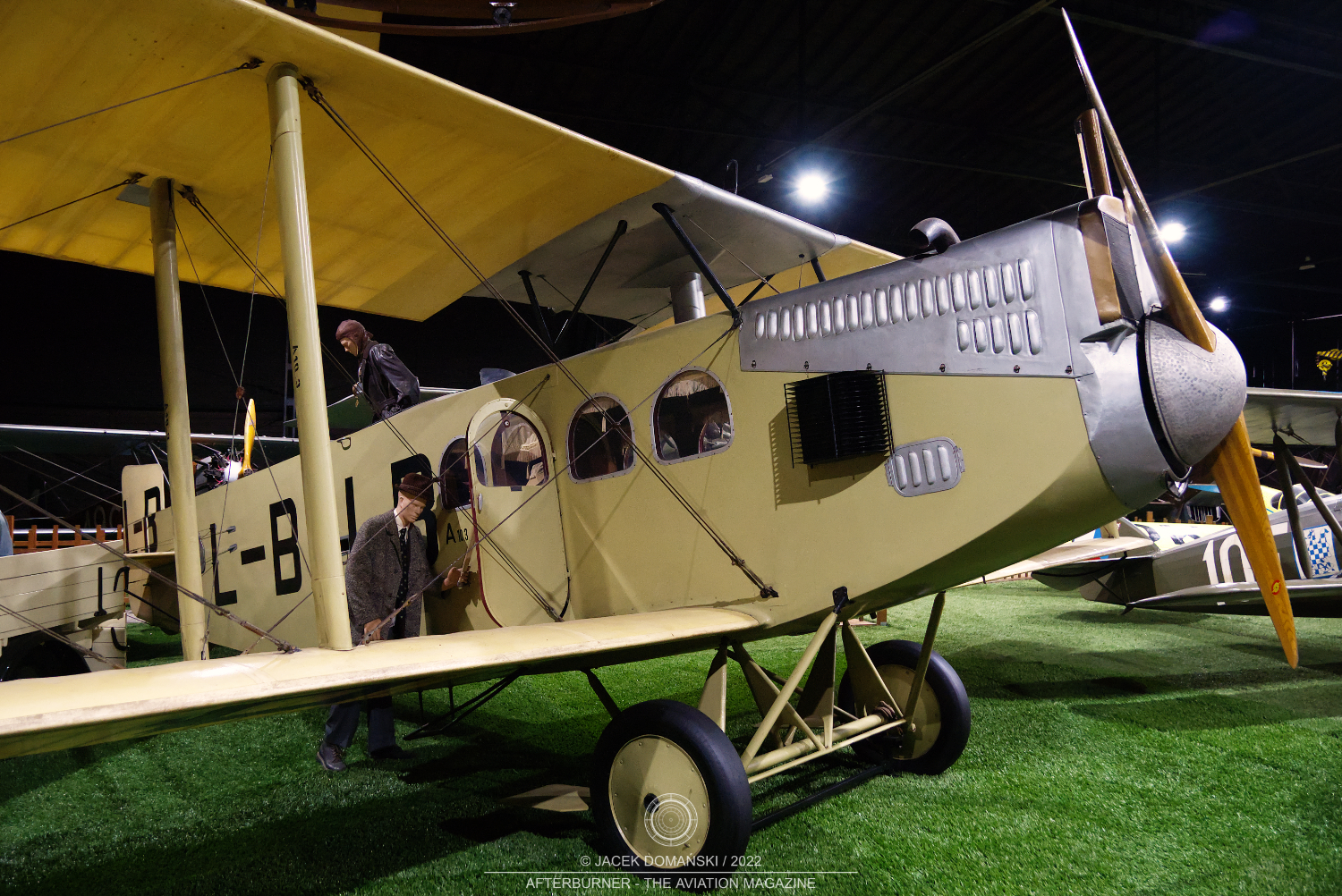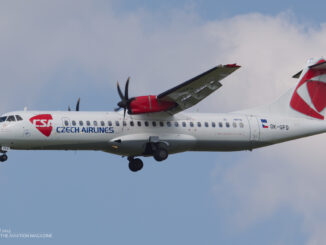 Aero A-10 (c/n 3, L-BALB), exhibited at Kbely Aviation Museum, Prague (Letecké muzeum Kbely), August 2022.
Aero A-10 (c/n 3, L-BALB), exhibited at Kbely Aviation Museum, Prague (Letecké muzeum Kbely), August 2022.
In 1921, one of the pioneering Czechoslovak air carrier companies, Československá letecká akciová společnost – Čs.L.A.S. (Czechoslovak aviation joint-stock company) came with an idea to open regular air route between Prague and Dresden, with optional extension to Berlin. In order to ensure its service on the proposed route, Čs.L.A.S. placed an order to the Aero company, for a passenger aircraft, capable of carrying four passengers.
The aeroplane, developed by Rudolf Blasser and his team, was designated A-10 and successfully performed its maiden flight on 3rd January 1922. It was a biplane powered by single six-cylinder, water-cooled Maybach Mb. IVa engine, generating 260 hp. The A-10 was built in so-called limousine configuration, with enclosed, comfortable passenger cabin and open cockpit for the crew of two, situated behind the passenger compartment on top of the fuselage.
The Aero A-10 became the first commercial aircraft designed and built in Czechoslovakia. However, it was never delivered to Čs.L.A.S., as the company went bankrupt in a short time. Eventually, all the five already manufactured examples of the aeroplane were taken over by the Czechoslovak authorities.
In 1922 and 1923, the A-10 performed several evaluation flights, as well as set a few national aviation records in categories of payload, flight endurance and number of passengers carried on board. On 15th June 1923, one of the A-10 aircraft collided with another aeroplane during take-off. Fortunately, the accident concluded with only minor injuries, but the extent of the damage caused the A-10 was reckoned as beyond repair.
The A-10 testing period was marked by two long-distance flights, to Goteborg in Sweden and Mostar in then Yugoslavia. Both flights were performed with official Czechoslovak state delegations on board.
At the end of 1923, the remaining four A-10 aircraft were acquired by the newly established Československé státní aerolinie (Czechoslovak State Airlines). Shortly after, they were assigned to operate on Praha – Bratislava route. Regrettably, they were quickly rated as not reliable enough for that service, as well as suffered noticeable damage during landing at rough runways.
In consequence, in June of the next year – after just a few months of service – all the A-10s were retired from commercial operations with the ČSA. The aircraft were stored until the end of 1927 and, because no further service was found for them, scrapped in December of that year.
The only example that survived was the aircraft registered as L-BALB, the third made example of the A-10. The authorities decided to keep the aeroplane for museum purposes and indeed, in 1928 it was acquired by the Prague Postal Museum.
In 1956, the aircraft was taken over by the National Technical Museum in Prague. Regrettably, not to be exhibited there but dismantled and hidden for years. Many of its original parts were destroyed or collapsed while stored in inappropriate conditions. In 1973, remains of the A-10 were acquired by Military History Institute in Prague – front and tail sections of the fuselage, as well as Maybach powerplant with propeller.
Only in 1975, reconstruction of the aircraft was launched in Trenčín aviation plant. Works lasted about two years and on 15th September 1977, the A-10 was showcased in Kbely Aviation Museum, where the aircraft is being exhibited until today.



